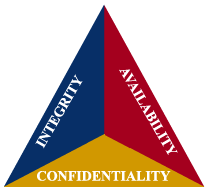Information Security Services
- Penetration Testing
- Vulnerability Assessment
- ISMS Policy Templates
- ISO 27001 Consultancy
- BCP & DR Consultancy
- IT Audit consultancy
- SIEM Solutions
- Virtual Private Network
- Email Security
- Data Protection
- Network Security
- System Security
__________________________
Data Leak Protection
Methods to protect:
- Classify the data
- Measure the Risk
- Policy Adoption
- Compliance
- DLP Tools
_________________________
Download ISMS Policies
- ISQS-ISMS-001 ISMS Handbook v1.x.pdf
- ISQS-ISMS-002 ISMS Scope Statement v1.x.pdf
- ISQS-ISMS-003 ISMS Scope v1.x.pdf
iSquare Systems - Information Security Consulting

ISMS – Information Security Management system
To Establish, implement, operate, monitor, review , maintain and improve information security.
To protect information and information systems from unauthorized access, use, disclosure, disruption, modification or destruction.
CIA – Confidentiality, Integrity and Availability.
- Confidentiality: Information is not disclosed to unauthorized individuals
- Integrity : Accuracy and completeness of information or assets
- Availability : Usable upon demand by authorized entity.
- Type 1
-
Type 2
- Type 3
- Once authenticated, user can roam the network freely and access resources and services without being re challenged for authentication.
- Easier administration by reducing the number of locations on which an account must be defined
- Enabled through authentication systems that provide logon credentials automatically when prompted.
- Scripts
- Kerberos
- SESAME
- KryptoKnight
Information Systems Authentication
The process of verifying or testing that the claimed identity is valid.
Authentication methods:
A Type 1 authentication factor is something you know, such as a password, personal identification number (PIN), lock combination, pass phrase, mother’s maiden name, favorite color, and so on.
A Type 2 authentication factor is something you have, such as a smart card, token device, memory card, and so on.
A Type 3 authentication factor is something you are, such as Fingerprints , voice print, retina pattern, iris pattern, face shape, palm topology, hand geometry, and so on.
______________________________________________________
Single Sign On - SSO
Single Sign On (SSO) is a mechanism that allows a user to be authenticated only once on a system.
Advantages:
SSO Methods:
Details
______________________________________________________
Business Continuity Plan (BCP)
BCP is a system or methodology used to create a plan on how an organization will resume its partially or completely interrupted critical functions within a predetermined time after the occurrence of a disaster or disruption. The aim is to keep critical functions operational.
Business Impact Analysis:
BIA goal is to distinguish which are the most crucial and require to continue operations if a disaster occurs
Recovery point objective (RPO)—The RPO defines how current the data must be or how much data an organization can afford to lose. The greater the RPO, the more tolerant the process is to interruption.
Recovery time objective (RTO)—The RTO specifies the maximum elapsed time to
recover an application at an alternate site. The greater the RTO, the longer the
process can take to be restored

